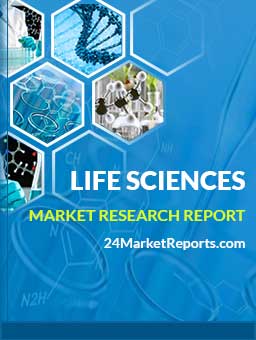
Download FREE Report Sample
Download Free sampleThe global Human Liver Models market was valued at 1501.49 Million USD in 2021 and will grow with a CAGR of 11.65% from 2021 to 2027, based on Research newly published report.
The prime objective of Human Liver Models Market is to provide the insights on the post COVID-19 impact wwhich will help market players in this field evaluate their business approaches. Also, Human Liver Models Market covers market segmentation by major market verdors, types, applications/end users and geography(North America, East Asia, Europe, South Asia, Southeast Asia, Middle East, Africa, Oceania, South America).
Liver is a vital organ that performs several important bodily functions including bile production for digestion, protein production, synthesis of blood clotting factors, storage of glucose (sugar) in the form glycogen, and detoxification. Also, the liver cells have a remarkable ability to regenerate themselves after any damage. Due to this unique capability, the liver tissues have fascinated the researchers. True understanding of molecular and cellular connectivity and functions of the liver tissues in an in-vivo as well as in-vitro setting is very important from the viewpoint of discovery science and clinical application. Development of liver models that can provide a virtual ecosystem that mimics the molecular processes of a liver factory can help understand molecular interactions to network dynamics and whole organ functions. These advanced liver models are mini-organs or organoids that are expected to replicate human liver physiology, anatomy, and functions from molecular layer upward. The formation of these living models is a fairly new area of science that has the potential to replace animal models. The human liver models offer several advantages over animal models that are not always accurate and pose ethical issues. The human liver models or organoids have been used to screen new drugs for liver toxicity. These models are also being deeply studied to build a functional model of human liver development. The process of making a human liver model starts with a fetal liver progenitor cell, an immature cell that transforms into a specialized liver cell. The fetal liver progenitor cell is allowed to self-assemble in a small disc. These discs are composed of ferret liver cells that are pre-processed to remove all cells of the ferret. The resultant mini-organ models the actual human liver development. These models have been observed to generate hepatocytes, the basic functional cells of the liver, which is expected to produce the functional bioengineered liver tissues for transplantation into patients in the near future.North American segment accounted for the largest share of the market in 2018. The human liver market for North America is driven by the presence of a well-established life sciences industry, growing awareness about the organoids technology, increasing government funding, growing incidence of NAFLD, and unavailability of livers for transplantation, increasing investments on research, rising focus on tissue culture-based clinical diagnostics, and the availability of skilled professionals.
By Market Verdors:
By Types:
By Applications:
Key Indicators Analysed
Key Reasons to Purchase

Speak to our Custom Research Team and get the Custom Research in a budget
Custom ResearchFrequently Asked Questions ?
A license granted to one user. Rules or conditions might be applied for e.g. the use of electric files (PDFs) or printings, depending on product.
A license granted to multiple users.
A license granted to a single business site/establishment.
A license granted to all employees within organisation access to the product.
Upto Working 24 to 48 hrs
Upto 72 hrs max - Weekends and Public Holidays
Online Payments with PayPal and CCavenue
Wire Transfer/Bank Transfer
Hard Copy




 Industry Market Size
Industry Market Size SWOT Analysis
SWOT Analysis Industry Major Players
Industry Major Players Revenue Forecasts
Revenue Forecasts Historical and Forecast Growth
Historical and Forecast Growth Profitability Analysis
Profitability Analysis
























